Category: RESOURCES
资源
资源
“训练学生提高写作水平”
有影响力教师的四个特质
聚焦关注K-State,2015(视频)
关于学习的新科学(视频)
优化讲学-图片-视频
头脑风暴:在K-State课堂中最大程度的学习-图片-视频
“危机-训练”
“营造包容性课堂环境”
保持冷静并继续教学
2014年秋季研究生助教培训活动
堪萨斯州立大学-150年(视频)
1st Gen Students
“Teaching Success with 1st Gen Students”
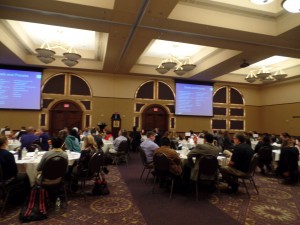 Did you know that over 40% of K-State student population are 1st Gen? In addition, an amazing number of our K-State faculty are also 1st Gen?
Did you know that over 40% of K-State student population are 1st Gen? In addition, an amazing number of our K-State faculty are also 1st Gen?
“Teaching Success with 1st Gen Students” event was a remarkable one. Our hearts were deeply moved by Judge Tommy Webb, our Luncheon Speaker, when he shared his life story. As well as we observed some interesting videos about K-State faculty who are 1st Gen. And mainly we got valuable information from Dr. Lee Ward, who was the keynote Speaker, about first generation college students and research done about it. Here I share part of his presentation.
First Generation Students in the Headlines
Chronicle of Higher Education
First Generation Students are Pioneers, Not Problems
Helping First Generation Students Straddle Two Cultures
Separate Dorms for First Generation Students?
The Biggest Obstacles for First Generation Students
First Generation Latino Students in Crisis
Defining First Generation Student
- A student for whom neither parent obtained a bachelor’s degree (TRIO definition)
- A student for whom neither parent attended college (Suder Foundation definition)
Transition into College
Preparation for College
- Lower educational aspirations
- Lower career aspirations
- Fewer honors, dual enrollment and AP courses in high school
- Lower high school GPA
- Lower SAT and ACT scores
- Fewer college visits and apps
Cultural Capital and FGS
- The social value that a student derives from his or her parents
- The language, norms and directions that parents pass on to their children regarding college
- Cultural capital is always different, never more or less
- Educational and social disadvantage comes from difference, not amount
Transition through College
Academic and Social Integration
- Less likely to study in groups or connect with peers outside class
- Less likely to connect with faculty outside class
- More likely to delay entering and interrupt enrollment
- Most work, and work more than other students, while in college
- Fewer study in arts, humanities, education, and social sciences
- Fewer live on campus in their first year
Engagement
- Lower participation in student organizations, recreation, learning communities, study abroad, honor programs, internships, community service…but
- High impact practices have a compensatory effect
Transition Out of College
- Attrition rates are higher
- FGS leave with higher debt
- FGS leave into continuing family responsibilities that other graduates generally do not have
- Becoming Straddlers
The Role of “The Faculty”
“The key to increasing student learning and success
is not for faculty to teach more or better,
but for all of us to create conditions that motivate and
inspire students to devote time and energy to
educationally-purposeful activities, both in and out of class.”
The Student Learning Imperative, 1994
“Teaching Students to Write Well”
I would like to highlight the following interesting material as an example. It is necessary to mention that writing regulations will depend on the area you are writing for.
Common Writing Mistakes to Avoid
- Avoid the 1st person (I, me, my, we, us, our) in formal writing.
- Avoid the 2nd person (you, your, yours, yourself) in formal writing.
- Avoid contractions in formal writing. Instead of writing don’t, write do not, etc.
- Periods and commas go INSIDE quotation marks, not outside.
- Use the active voice instead of the passive voice:
- Passive voice sentence: The paper was written by him.
- Active voice sentence: He wrote the paper.
- Be consistent in your verb tense when writing papers; do not switch back and forth between the present and past tense.
- It’s = it is (a contraction); its = possessive – something belonging to it.
- It’s really hot outside. (It is really hot outside).
- Every class has its own personality. (This is possessive, even though there is no apostrophe).
- Use semi-colons correctly. There are only two ways to use semi-colons correctly:
- Connects two COMPLETE sentences that are very closely related. Ex: The right to vote in local and national elections is something that many people in the world do not have; for this reason, many people believe that anyone who is eligible to vote has a responsibility to do so.
- Used to divide items in a series when a comma is already part of a clause that makes up one of the items in the series: Ex: There are basically two ways to write: with a pen or pencil, which is inexpensive and easily accessible; or by computer and printer, which is more expensive but quick and neat.
(From: http://writing.wisc.edu/Handbook/Semicolons.html)
GTA – PDS- The Teaching Persona
The Teaching Persona
August 26, 2015
Dr. Jana Fallin Ph.D.
Information from: The 4 Properties of Powerful Teachers by Rob Jenkins published in The Chronicle of Higher Education on April 3, 2015, Volume LSI, Number 29, page A31.
 On our first event of the Fall GTA – Professional Development Series, Dr. Jana Fallin talked about the 4 Ps that the persona who is teaching needs to possess and she gave some advices on how to become a great teacher.
On our first event of the Fall GTA – Professional Development Series, Dr. Jana Fallin talked about the 4 Ps that the persona who is teaching needs to possess and she gave some advices on how to become a great teacher.
-
Personality
What are some traits or characteristics that make teachers great?
Great teachers are…
- Good-natured and approachable
- Professional without being aloof
- Funny
- Demanding without being unkind
- Comfortable in their own skin and natural
- Creative and willing to try something new
You do NOT have to emulate all of these traits. One of the best things about teaching is that our profession is idiosyncratic – we are all different, and that’s okay!
Do NOT try to be something that you’re not.
Focus on your positive traits and practice some of these other traits as you see fit.
-
Presence
How can we practice “owning” the room?
Presence is the ability to make students feel at ease in your classroom. Presence is something that we can work on but that takes practice.
You can start practicing by observing other teachers in the classroom. Take notes about things that work well and things that need improvement. Pay special attention to what the STUDENTS are doing as you observe the classroom.
- Practice makes perfect, so try to practice your presentation skills as much as possible – presenting your research in front of your colleagues and/or asking a faculty member if you can guest lecture is a great way to establish your “presence.”
- NEVER just go through the motions. If you are teaching a class for the first time or for the 20th time, make sure you are mindful of your presence.
- Think about videotaping your lectures. It can be painful to watch yourself on video, BUT it can be one of the most helpful ways for you to see how you can improve your presence.
-
Preparation
What does it look when YOU prepare for class?
- You will not always be teaching a subject that you are an “expert in.” As such, preparation is key to being an effective teacher.
- Think of techniques to get students involved with their learning. As you prepare, keep in mind that learning is messy and that is okay. You want to give your students opportunities (e.g., low risk assignments) to take risks and in some cases fail. Failure can be an important learning opportunity.
- When students know that you care about what they think and that you want to help them to succeed, this will motivate them to get more involved with their learning.
- Think about the structure of your class and make sure that you implement this structure and consistency. Structure for your class can be things as simple as showing up early for class each day and/or making details about assignments available ahead of time for students etc. The more your students see you are prepared and want them to succeed, the more likely they are to get involved with their learning.
- Prepare for class by acknowledging that you are NOT the “keeper” of knowledge. Instead you are the “facilitator” of knowledge.
-
Passion
Do you love your subject matter AND your students?
This might be the most powerful and important of all qualities.
- NEVER talk about students in a demeaning and disrespectful way. Sure, there will be times when you get frustrated with your students and you need to vent, but make sure at the end of your venting session you brainstorm solutions to the problem(s).
- If students are coming to class late you can vent about how frustrating that is with a colleague, BUT how might you solve this problem? Maybe talk to the tardy student(s) and/or implement a late policy.
- Constantly complaining without brainstorming solutions to the problems will only create hostility between you and your students – hostility and negativity toward your students ≠ powerful/effective teaching.
Good beginning of Semester
Wishing all K-State community have a good beginning of Semester
It is always important for instructors to have some training resources in case you forget something. A good tool to have on hand is an Online course in the use of Canvas. In addition, if you would like more training opportunities, Information Technology IT offers a great training schedule for that, taking into account that all K-State courses need to be upgraded to K-State Online powered by Canvas by Dec. 31.
Most of the professors take for granted that all students know how to access the online class and that is not truth. Some students would need some help or communication to access their courses. It is not fair that when your other classmates are one big step forward accomplishing the readings, getting the power point presentations on all the other resources available for the class, some students do not know how to access the online course or that it even existed. Therefore, this is a good tool to access your courses in K-State and for additional help step by step instructions are also provided.
Something very useful to know is also that all K-State community can get advantage of some free IT resources for our electronic devices, like for example a free copy of Microsoft Office for our personal use. Isn’t it wonderful? Take advantage of all these resources to start this new semester right.
Why do you evaluate?
 Besides it is an institutional requirement, I evaluate to check how well my students are understanding and learning what I am teaching, I evaluate to check if I am explaining and teaching correctly and enough for students to learn, and I evaluate to get information to improve teaching and learning.
Besides it is an institutional requirement, I evaluate to check how well my students are understanding and learning what I am teaching, I evaluate to check if I am explaining and teaching correctly and enough for students to learn, and I evaluate to get information to improve teaching and learning.
I use Assessment and Evaluation as an ongoing process, this is during the whole course.
What about you?
-
Why do you evaluate?
-
How do you evaluate?
-
What do you consider a Fair Evaluation?
-
Which kinds of Evaluation and Assessment do you use?
Why Teach?
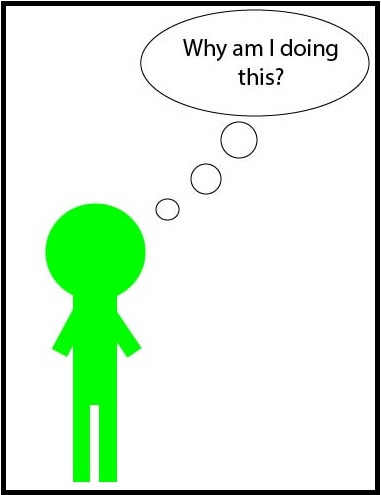 I teach because I want to help my students to learn, I teach because I want to guide my students to become independent learners, I want they learn to learn. I also teach because I want to make a positive impact on my students’ lives, and especially I teach because I want to make a difference on their lives, a difference on the Education of my country and consequently to make a difference in the world. Because I consider Education is the engine of human, social, technological and economic progress and development.
I teach because I want to help my students to learn, I teach because I want to guide my students to become independent learners, I want they learn to learn. I also teach because I want to make a positive impact on my students’ lives, and especially I teach because I want to make a difference on their lives, a difference on the Education of my country and consequently to make a difference in the world. Because I consider Education is the engine of human, social, technological and economic progress and development.
This is an important questions all Instructors should answer themselves. There can be diplomatic reasons, social needs, job opportunities, salaries and benefits, etc.
What is your answer?
Why Teach?
What is your favorite Assessment?
Favorite Assessment?
Tell us about your favorite kind of assessment your professor/s applied in the classes and you liked a lot. (It can be formal or informal assessment).
Share with us about your favorite kind of assessment you really like to apply with your students. (It can be formal or informal assessment).
Powerful Teachers
The 4 Properties of Powerful Teachers
This is a great article published in The Chronicle of Higher Education on April 3, 2015, Volume LSI, Number 29, page A31, by: Rob Jenkins.
According to Jenkins, four qualities that all Powerful Teachers possess are:
Personality
Great teachers tend to be good-natured and approachable; professional without being aloof; demanding without being unkind; natural; and tremendously creative.
Presence
The unmistakable capacity some people have to “own any room”. We might call it charisma, but it’s more than that. Yet the best teachers, as Lang concluded, are always “present” connecting with both their subject matter and their students.
Preparation
Preparation occurs on three levels: long-term, medium-term and short-term. Most faculty members have already accomplished the long-term preparation by virtue of holding advanced degrees. That preparation will serve you well and be your primary source of authority from your first day in the classroom until your last. But, in between, you must continue your education on a regular basis.
Passion
Passion, or love, manifests itself in the classroom in two ways: love for your students and love for your subject matter.
Maybe we can’t all be that kind of teacher, but we at least should aspire to be. Besides even if we weren’t born with some of these qualities, we can develop them.
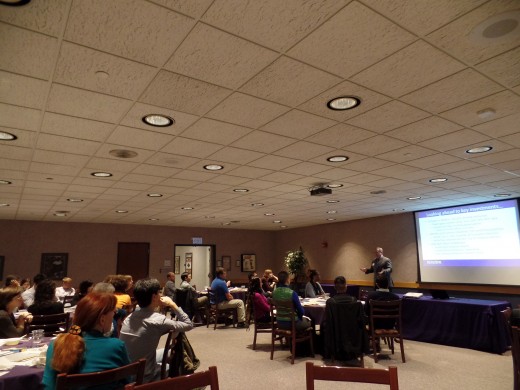
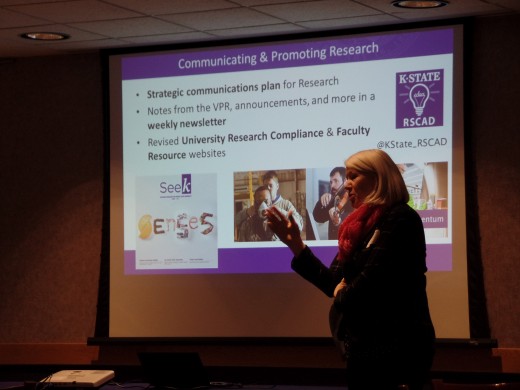
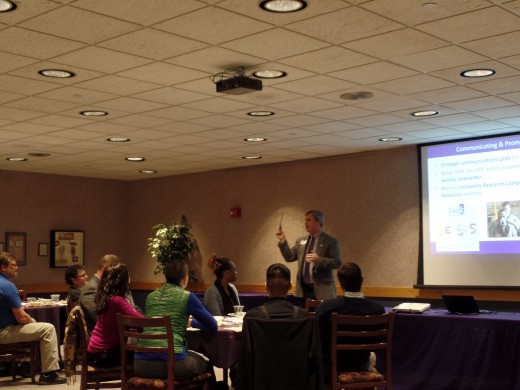
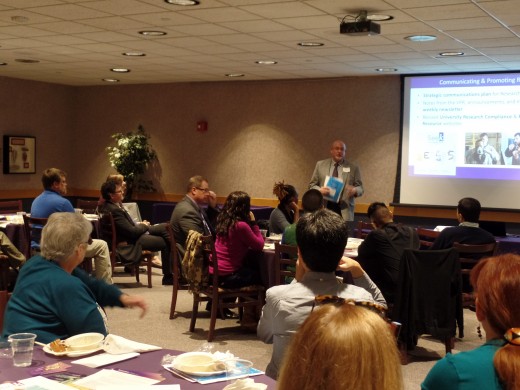


Recent Comments